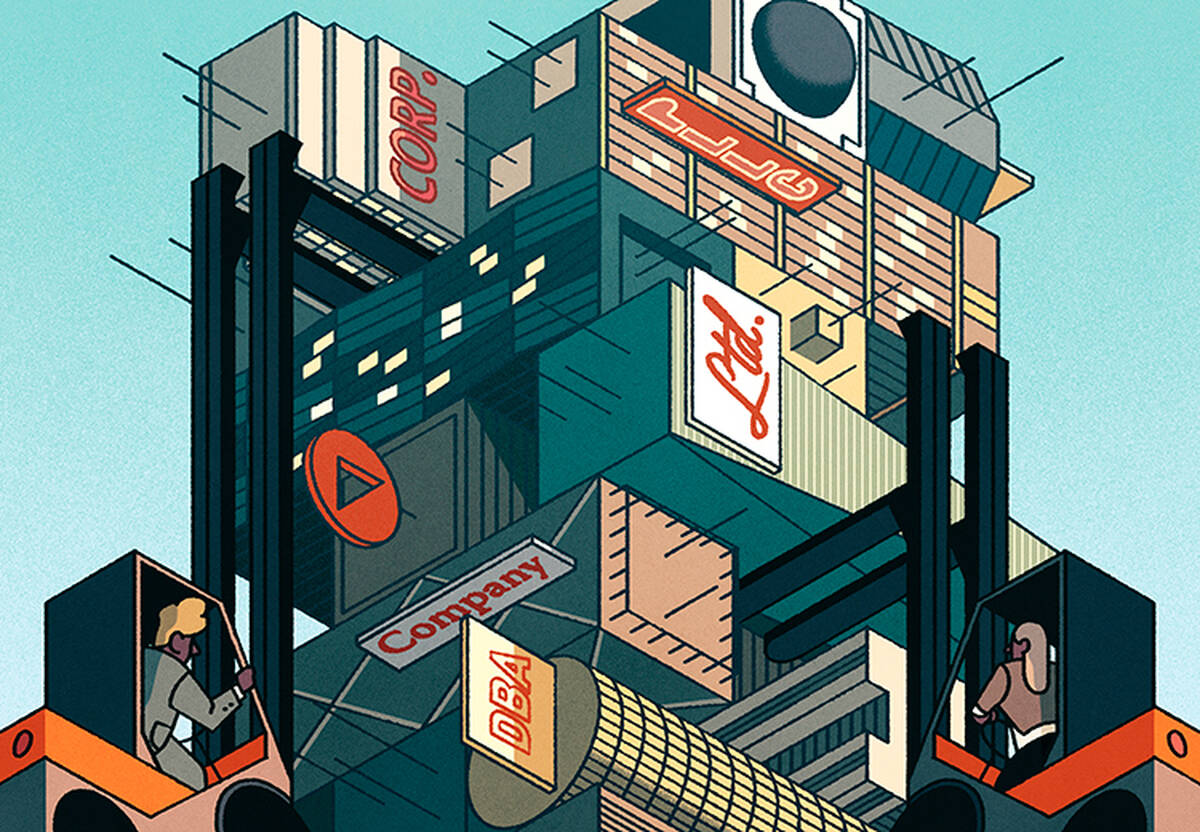Faculty from our strategy department discuss the tactic, its evolution, and its potential to reshape industries across the economy.
INSIGHT: Why are we seeing this trend toward vertical mergers at the moment?
Craig Garthwaite: There is growing uncertainty about some of the business models in certain industries like healthcare and entertainment, and how these industries are going to generate money from assets in the future.
Meghan Busse: We’re pretty sure there’s going to be value generated by, say, healthcare in the future. But which layer of the healthcare system is going to be in the best position to capture it: the pharma companies, the insurers, the doctors, the hospitals?
As you become more uncertain, companies think, “Well, okay. We don’t know which layer is going to be the valuable layer, but if we own the whole thing from top to bottom, then whichever turns out to be the valuable layer, we’ll be sure we’ve captured it.” The only way to solve this uncertainty problem is just to put all of the layers of production in the same entity.
Amanda Starc: The alternative would be contracts between each of the layers. But you’re never going to be able to write a contract that lets the benefits flow where they should. We know because we’ve tried. We’ve tried every variation of this contract and none of them works particularly well. Once you try to write the contract and you can’t, vertical integration is the natural next step.
Garthwaite: It’s not just about which layer of today’s stack will matter; it’s also about what the future of the stack could be. It’s going to require investments from one current set of assets that pays off to another set of assets in a way that is not fully clear. This guy at the bottom, he doesn’t want to make an investment from which he might not capture all of the benefits—and so he doesn’t.
This is, I think, in some ways like the CVS–Aetna story. Think about the many clinics you see at CVS today. They’re designed to get you to buy pharmaceuticals and cough medicines and stuff like that in the store because that’s how CVS makes money. They don’t do a lot of primary care or preventative medicine, which they might be pretty well positioned to do, say for diabetics in between primary care doctor visits.
Post-merger, CVS can have a nurse practitioner or even primary care physicians in stores, which is very low cost. CVS won’t get that much revenue from that, but it might stop patients from going to the hospital, which is going to make Aetna super happy. A merger like CVS–Aetna would create the incentives whereby the firm is going to be more profitable if its customers are healthier.
Starc: If you tried to write a contract between CVS and Aetna, what does it look like? How do you define the set of customers? And then you need to include a metric—maybe something like blood sugar. But even if you have all of these diabetics whose blood sugar is under control, what you really care about is whether or not they’re going to show up in a hospital.
Garthwaite: Right. People have misunderstood the argument for supporting this merger—it is not saying “this will work” to increase the profits of the combined firm , but it’s saying “this is the sort of set of conditions you would need for it to work.”
INSIGHT: Are there times when we tend to see more vertical integration than others, for example, when traditional business models are being upended?
Garthwaite: In a changing business environment, integration seems to go in waves because the industry is not uncertain for one player. It’s uncertain for everyone in that industry. Everyone is trying to figure out the right structure to succeed. You need a new set of assets and activities to succeed: some you’re going to buy, some you are going develop, and some that just aren’t that useful anymore you’re going to shed.
Busse: There’s an example we talk about in our core strategy class that addresses exactly this: the relationship between soft-drink producers and their bottlers. At Coca-Cola and Pepsi, concentrate producers produce the flavor and syrups and all of the branding and national advertising, while separate bottlers—not a part of those companies—put the concentrate in bottles and carbonate it and deliver it and have it in the vending machines.
Over the decades, a very rich set of contracts evolved to deal with all of the potential conflicts and incentives in order to make this a workable business model.
But in the 1980s, concentrate producers found themselves dealing with all of these little franchised companies that were too small to make the capital investments necessary to build a modern, efficient bottling plant. What Coke and Pepsi did was buy up all of the little bottlers, vertically integrate, change the operations of the bottlers, install the capital—and then spin back out the bottling companies. Having made the necessary adaptations to their bottlers, Coke and Pepsi could now go back to the former system of incentive contracts.
Fast forward 20–30 years. In the last decade or so, people’s tastes have been changing. If you look at the per-capita consumption of soda, it has flattened out as people have decided it isn’t good to drink so much sugar. Now people want to drink other things: sparkling water, teas, sport beverages…. In order for Coke and Pepsi to ensure people continue to drink their brands, it’s going to take lots of investments. Bottlers are going to have to run a much more complicated production process, with different kinds of bottles and different distribution.
Again, the economics are changing, so we have seen Coke and Pepsi buy up their bottlers again and spin them back out in a different form.
Starc: You can also imagine scenarios where vertical integration does not work out nearly as well. You can come up with lots of examples of this in healthcare. In the 1990s, a bunch of hospitals bought up a bunch of physician groups. It turned out to be a bit of a disaster because you can buy up physicians all you want, but good luck telling doctors what to do. The two parties were financially integrated but not particularly clinically integrated. The hospitals ended up spinning off these physician practices later.
You could imagine something similar happening in the CVS–Aetna case. So while you can imagine a completely reasonable reason they would want to rearrange the boundaries of the firm, it may turn out that either the world changes in ways they didn’t expect, or their answer to the correct expectations was wrong. In both of those situations, they may end up spinning them out because they realize they made a mistake.
INSIGHT: What is the role of antitrust regulators in this environment?
Garthwaite: It’s not the role of government to step in and stop a misguided merger. Businesses should be allowed to make mistakes. They may lose money. Capitalism is a messy business.
Government’s role in the antitrust sense is to make sure that consumers aren’t harmed from a lack of competition. They have a very specific, well-tailored, and important mission to protect competition.
R. Mark McCareins: Vertical mergers do not “fit” the traditional horizontal-merger analytical framework used by the U.S. regulatory authorities. As such, the Federal Trade Commission and Antitrust Division of the Department of Justice are faced with pounding a square peg into a round hole.
Certain consumer-protection interests appear fearful that such an amalgamation of power and resources in related but not directly competitive markets could bode poorly for customers. Vertical mergers along the lines of AT&T–Time Warner, Amazon–Whole Foods, or CVS–Aetna could create enhanced barriers to entry, reduce potential entry, and discourage smaller rivals from competing with the vast resources of entrenched firms.
It must be noted, however, that attempting to draw a line between a “good” vertical merger and a “bad” one using these types of metrics is an extremely slippery slope, especially when one considers that one of the fundamental tenets of antitrust policy is that “bigness is not necessarily badness.”
Busse: Exactly. Bigness is not necessarily bad. The distinction is in how you got there and what you do with your size once you get there.
Amazon got big because it offers a whole bunch of things in a really convenient way. Amazon was not writing exclusive contracts with publishers where they tried to prevent Barnes and Noble from getting books. They haven’t been trying to buy out real estate licenses to make it hard for retail bookstores to open, or write contracts with authors that prevent them from doing readings at local bookstores, or any of those kinds of restrictive-of-competition things. They’ve just provided an offering that lots and lots of people prefer.
That’s very different from what Standard Oil did way back in the day where they really did write contracts with railroad companies that would restrict them from being able to transport anybody else’s oil out of a particular region, so small oil producers would go out of business and Standard Oil could buy them up cheap. That truly is anti-competitive, and there’s a reason why antitrust law tries to prevent it from happening.
Starc: You could tell a similar story in tech as well. The winners in tech offered the best product, consumers liked that product, and over time, they built up this network effect that became self-reinforcing.
Busse: But there’s a point when you are so big and dominant that things you do can have anticompetitive effects—things that, if they were done by a smaller firm, wouldn’t have anticompetitive effects.
Garthwaite: With great power comes great responsibility.
McCareins: Irrespective of whether vertical mergers should be viewed with the same critical eye that’s needed for mergers between direct competitors, the real question becomes, if such a view is adopted, what econometric tools would antitrust regulators utilize to evaluate vertical mergers?
Starc: The market-power story is murkier with a vertical merger than a horizontal one, because one monopoly brand store would not be able to extend its market power by buying the upstream firm. It’s not even immediately obvious that the merged entity would lead to higher prices conditional on its market power.
Busse: In a vertical merger we have to look at what the company is going to do in terms of potentially creating greater value and then look at whether that is going to put them at too great a risk of being in a position where they could behave in an anticompetitive way.
INSIGHT: How has public attitude toward antitrust evolved over time?
Garthwaite: Broadly speaking, you have seen a resurgence among the Left of the belief that antitrust is a tool that should be used more widely to cure a range of potential ills.
Starc: Take the AT&T–Time Warner merger. Many people are worried that large media conglomerates need to provide unbiased information to consumers. And because we have such a strong public-policy rationale for them to provide unbiased information, we’re going to take antitrust action as one tool in a varied toolkit to make sure these companies remain independent.
Furthermore, when the incentives of the regulators are more closely tied to the people whom they are supposed to be regulating than the government or consumers. In this environment, firms that grow too big can engage in public policy in ways that are to their benefit and to the benefit of their shareholders rather than consumers.
Still, this is not how antitrust enforcement is handled in this country—and I think for good reason. You can be worried about all of these things, but antitrust is not the right regulatory lever to pull. The antitrust authority has clear instructions: they’re supposed to be worried about anticompetitive behavior that harms consumers.
Garthwaite: There’s a distrust of large corporations in the U.S. that’s driving some of the public’s fear of big vertical mergers.
I think a lot of this concern is driven by stagnant wages and growth across the United States. There is a greater share of income being enjoyed by the top 1 percent, and we’ve had companies getting bigger and healthcare costs going up. All of this is happening together, so some sloppy reasoning suggests that these must all be related. And they could be related. Many people have an intuitive, visceral desire to say, “We have a hammer we can use. We can try and break these companies up. We’re angry at someone. Let’s go ahead and do that.” But that’s a bad way of looking at antitrust.




